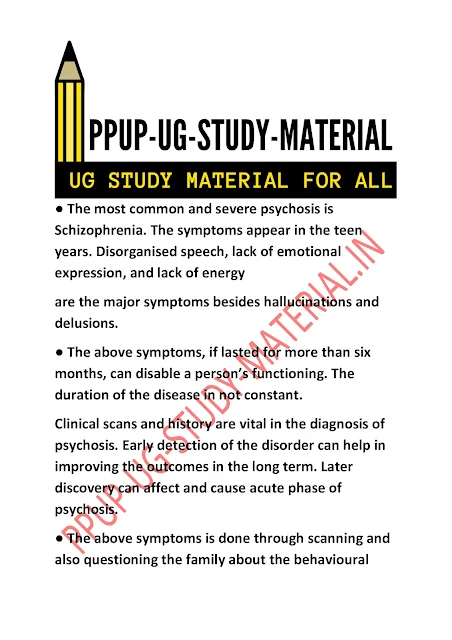Difference between psychosis and neurosis PDF and Explain Aetiologies and Symptoms of Diseases like Hysteria, Obsessive – Compulsive Neurosis and Paranoia - ppup part 2 psychology subsidiary ug study material download pdf
[ Difference between psychosis and neurosis PDF and Explain Aetiologies and Symptoms of Diseases like Hysteria, Obsessive – Compulsive Neurosis and Paranoia - ppup part 2 psychology subsidiary ug study material download pdf ]
In this BlogPost we'll cover These Topics - PPUP psychology ug study material 2022, PPUP psychology subsidiary ug study material free download, PPUP psychology subsidiary ug study material pdf, PPUP psychology subsidiary ug study material pdf download, ppup part 2 psychology subsidiary ug study material download pdf, PPUP psychology ug study material Subsidiary, PPUP psychology ug study material in English, Difference between psychosis and neurosis slideshare, Difference between psychosis and neurosis with examples, Psychosis and neurosis examples, Difference between psychosis and neurosis PDF, Psychosis and neurosis difference, Difference between psychosis and neurosis ppt, Symptoms of neurosis and psychosis, Neurosis and psychosis PDF, Difference between psychosis and neurosis slideshare, Difference between psychosis and neurosis with examples, Difference between psychosis and neurosis PDF, Psychosis and neurosis examples, Difference between psychosis and neurosis ppt, Neurosis and psychosis PDF, Psychosis and neurosis difference, Symptoms of neurosis and psychosis
Introduction to Difference between psychosis and neurosis PDF and Explain Aetiologies and Symptoms of Diseases like Hysteria, Obsessive – Compulsive Neurosis and Paranoia - ppup part 2 psychology subsidiary ug study material download pdf
Conclusion for Difference between psychosis and neurosis PDF
I hope You got what you were looking for ..reading this post Difference between psychosis and neurosis PDF and Explain Aetiologies and Symptoms of Diseases like Hysteria, Obsessive – Compulsive Neurosis and Paranoia - ppup part 2 psychology subsidiary ug study material download pdf ... and if you got any query ..you can comment below so we can provide you further assistance.


















No comments